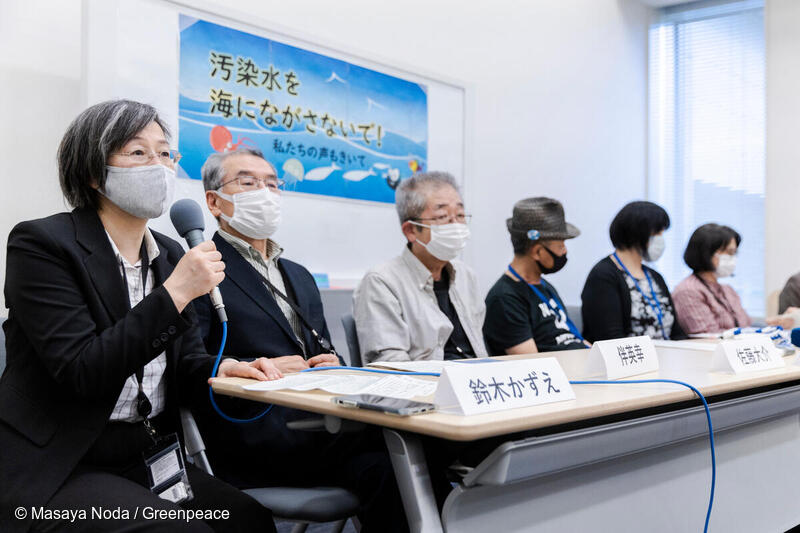Greenpeace collected 183,754 petitions of opposing the discharge of Fukushima radioactive water into the Pacific

Tokyo, 12 April, 2021 – In response to the Japanese government’s plan of discharging 1.23 million tons of radiated water into the Pacific, Greenpeace gathered 183,754 petitions from Japan and South Korea. It is reported that the Japanese government will make a cabinet decision to discharge the contaminated water into the ocean on 13th April[1], while many NGOs and citizen groups strongly urge the Japanese government to stop releasing radioactive water.
Kazue Suzuki, Climate Change and Energy at Greenpeace Japan, said:
“If the government decides to release radioactive water into the ocean, the public hearings, and meetings with fishermen’s groups that the government has held will end up with nothing more than a formality, as the public opinion is clearly against this.
The current regulation does not limit the total amount of radioactivity to be released and allows releasing too much only if it is diluted. Some of the radionuclides to be released have a lifespan of thousands or tens of thousands of years. The decision to release the contaminated water into the ocean will leave huge troubles for the future.
TEPCO will be responsible for the actual release of the radioactive water, but a recent scandal about an unauthorized staff accessing the control room of the nuclear plant led to doubts on the company’s eligibility of handling the radioactive materials.
Considering the immeasurable impact on the environment and society, as well as the competency of TEPCO, the decision to release the water into the ocean should be untenable. Instead, the Japanese government should continue to store the contaminated water in the Fukushima Daiichi site while developing technology to remove radiation.[2]”
ENDS
Notes:
[1] NHK: “Fukushima wastewater set to be released into sea” (9 April)
[2] Greenpeace report: “Stemming the Tide 2020: The reality of the Fukushima radioactive water crisis”